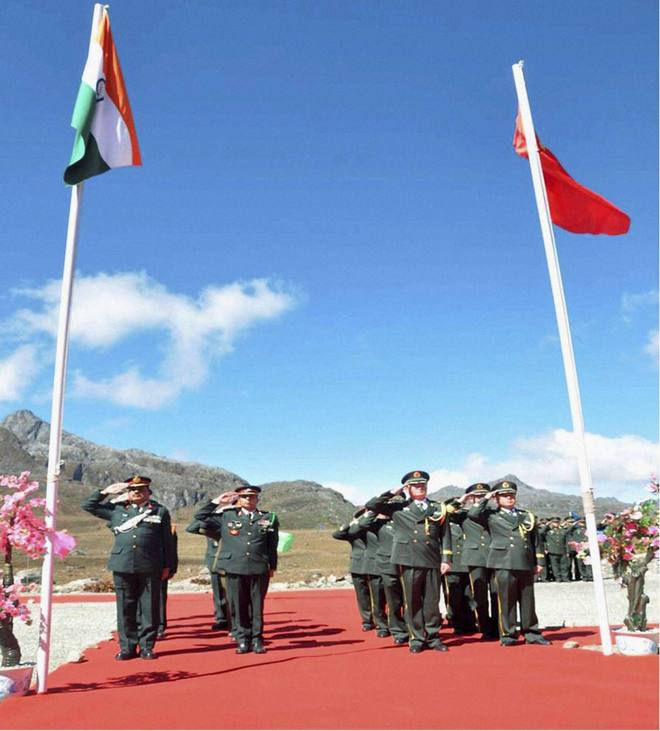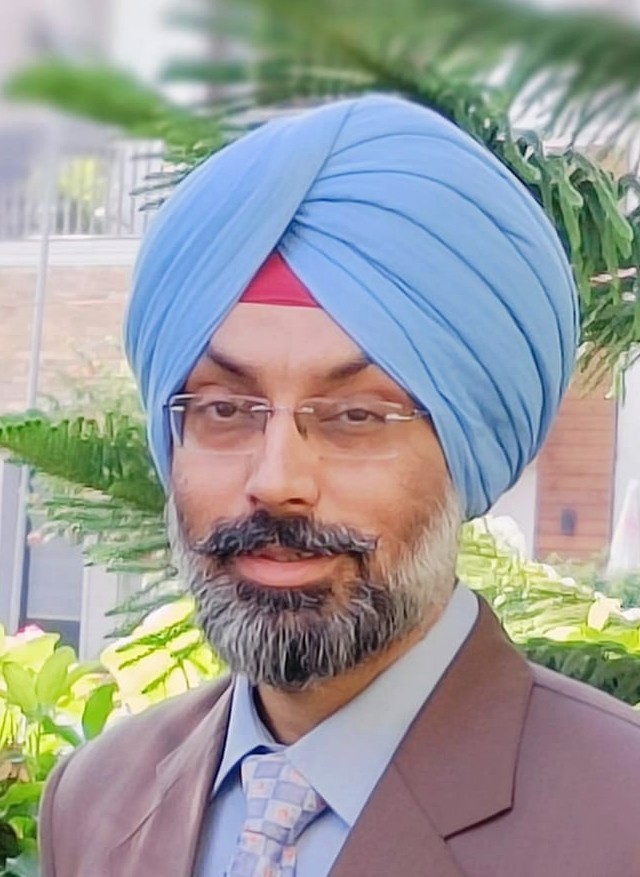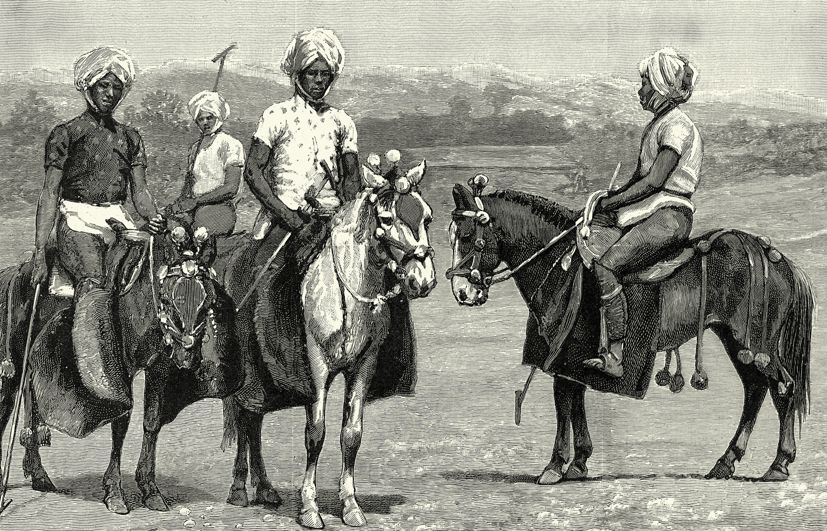SANJHA MORCHA WISHES ALL VETERANS HAPPY LOHRI

Current Events :










Ajay Banerjee
New Delhi, January 12
Army chief Gen Manoj Pande on Thursday said the security situation along the northern borders (with China) is stable but remains unpredictable.
Addressing a press conference ahead of the Army Day, the Army chief said they had resolved five of the seven friction points along the Line of Actual Control (LAC) in eastern Ladakh.
Gen Pande praised the troops on the ground saying, “We have been able to maintain a robust defensive posture to prevent our adversary from changing the status quo along the LAC.
“The Army has decided to undertake transformation of Army across five key domains. These are force re-structuring and optimisation; modernisation and technology infusion; man management like agnipath; jointness; and the refining systems and processes.https://d22cba0186b65889fd9bfa3075bbe965.safeframe.googlesyndication.com/safeframe/1-0-40/html/container.html
“2023 will be the year of transformation,” Gen Pande said, adding that the process would continue.
On being asked about modernisation, Gen Pande said, “We as of now have 45 per cent vintage equipment; 41 per cent of the equipment is current technology and some 12 to 15 per cent are state-of-the-art.
“By 2030 we aim to have 45 per cent state-of-the-art and 35 per cent current technology,” Gen Pande said.
When asked if there was any impact on military movement ahead of Joshimath, he replied in the negative, adding that they were ready to help the local administration, if required.
There is a slight increase in the number of troops of People’s Liberation Army facing the eastern command, Gen Pande said.
“The troops that came for training have remained,” Gen Pande said, adding that they had adequate deployment and the reserves to meet any challenge.l
“There is a marked improvement in infrastructure on our side,” the Army chief said, adding that the tunnel under the Zoji La would be operational by the end of the year. The issue of round-the-year connectivity to Ladakh will be sorted,” he said.

The India-China conflict in Arunachal Pradesh and Ladakh has brought to the fore the challenges faced by our troops deployed along the Line of Actual Control. I am reminded of my own ‘lockdown’ at Daulat Beg Oldie (DBO) in 1985. There was no road up to DBO at that time, and the only source of access was an old airstrip lying virtually abandoned after its use in the 1962 War. The supplies for our troops used to be managed through mules or by air-dropping in the DBO area. Fairchild Packet aircraft were used to carry out logistics sorties. Fortunately, now there is a fairly well-maintained airstrip, which has put us in a strong position in the Karakoram area.
I was commanding a field company of engineers operating in the Siachen Glacier area under Operation Meghdoot at Thoise. Our brigade commander, Brig Jal Master, called me to his office and told me that a special Cheetah helicopter had been arranged for going to DBO, and that I had to go there urgently for carrying out a recce of the abandoned airstrip and to reactivate it fast. The next day, I took off in a helicopter from Thoise. We followed the old Hindustan-Tibet Silk Route, which was visible from the air. DBO is located on that ancient route, about 16 km from the Karakoram Pass.
We could see the carcasses of perished animals along that route. After about 45 minutes, we landed there. I was dropped along with my haversack and the pilot flew back to Thoise as there were no refuelling facilities available at DBO. I carried out the recce of the advanced landing ground (ALG) the very next day. It was a gravel-type airstrip, situated at an altitude of 16,700 ft.
But when I had completed my assignment and was waiting for the helicopter, the weather suddenly turned very bad. The temperature was below minus 30 degrees and the wind velocity was around 150 km per hour. The arrival of the helicopter was ruled out. I was stranded in a semi-underground bunker for 28 days. In freezing weather, in a land without trees or grass and no human around, it was the kerosene bukhari that kept me warm. My family was worried until my unit informed them about my safety. It was quite an experience. Guarding our frontier against a formidable enemy in such abnormal conditions is not easy. We must salute our soldiers for the courage they bring to their task.

New Delhi, January 12
Discussing multiple challenges for India from China and Pakistan, experts have pointed out that relations with either are not expected to normalise in the near future.
Delhi Forum for Strategic Studies organised a discussion on ‘2023: Security Challenges Confronting India’. The discussion revolved around the two neighbours of India and the lessons from the Russia-Ukraine war.
Tilak Devasher, who retired as Special Secretary at the Research and Analysis Wing and is now a member of the National Security Advisory Board, said, “For India, relations with Pakistan are not a priority, India is looking at Indo-Pacific. Relations with the neighbour will be in limbo till political and financial situation stabilises there.”
“In the last 70 years we have tried to live as normal neighbours. Pakistan does not behave as a normal state, ‘anti-India’ is what defines its identity,” Devasher said
The founding head of the Defence Intelligence Agency, Lt Gen Kamal Davar (retd), mentioning China, said, “Why do we have to even talk about differing perceptions of the so-called Line of Actual Control (LAC) in Ladakh? The Chinese are in occupation of their November 20, 1962 claim-line and are now salami slicing in the buffer zone. We need to carry out mirrored actions against them.”
Maj Gen BK Sharma (retd), who heads the United Services Institution, made an assessment of the Russia-Ukraine war saying wars would be long. “In India we have been talking about short intense wars. We are in a state of war with China and have been in a state of war with Pakistan for decades. The Russia-Ukraine war has shown how inexpensive drones hit valuable targets or cruise missiles brought down a warship.”
Lt Gen Syed Ata Hasnain (retd) mentioned strategic communication as a vital tool saying, “We need research and academic back-up to run social media handles
India, he said, needs a think-tank where diplomats, retired soldiers, Indian Police Service and mass communication specialists decide on the context of communication.
Former ambassador Suresh Goel said, “Relationship between India and China is going to remain adversarial and this is not due to the territorial dispute; it’s due to China’s ambitions.

Chandigarh, January 11
Chandigarh-based laywer, Maj Navdeep Singh, has been appointed to the Military Justice Advisory Committee constituted by the Commonwealth in December 2022, that comprises five global experts on military justice.
The Committee, under the aegis of the Office of Civil and Criminal Justice Reform (OCCJR) in the Commonwealth Secretariat, will deal with requests from member countries for assisting them in military justice reforms and other related legislative transformation.
The Commonwealth is an international body of 56 nations and promotes democracy, good governance, peace and the rule of law. It is also considering working upon model military justice principles.
Navdeep was earlier a member of the High Level Committee of Experts constituted by the Defence Minister in 2015 to reduce litigation related to service issue of defence personnel, and has authored several books on military law and regulations.
He was also a member of the ‘Yale Draft’ that was compiled after a conference of global jurists at the Yale Law School in 2018 to promote independence, competence and impartiality in military justice processes. He is an International Fellow at the National Institute of Military Justice, Washington DC.
The other members of the committee include Judge Alan Large, head of the service judiciary of the United Kingdom, Professor Eugene Fidell from Yale Law School and president emeritus of the National Institute of Military Justice, Washington DC, Chief Judge Kevin Riordan, Judge Advocate General of New Zealand and Dr Michelle Nel, Vice Dean, Faculty of Military Science of the University of Stellenbosch, South Africa.

Samaan Lateef
Srinagar, January 11
Three soldiers, including a junior commissioned officer (JCO), lost their lives after they slipped into a gorge during patrolling along the Line of Control (LoC) in North Kashmir, officials said on Wednesday. The soldiers were part of a regular operational task in Machil sector of Kupwara when the mishap took place at about 5:30 pm on Tuesday evening.
Will be remembered
Their sacrifice and selfless service to the nation will always be remembered. Manoj Sinha, L-G
Stand with families
We offer glowing tributes and express sympathies with bereaved families. Ravinder Sharma, Cong leader
“While moving towards the forward post, snow along the narrow track broke, leading to the slipping of one the JCOs and two jawans into a deep gorge,” said Srinagar-based defence spokesperson Col Emron Musavi.
The Army launched a rescue operation with the help of troops from a nearest post. Sustained efforts of the search party led to the recovery of mortal remains of the three soldiers between 4.15 am and 4.45 am on Wednesday morning,” the spokesperson said.
The deceased have been identified as JCO Parshotam Kumar, 43, of Majua Uttami village of Jammu, Havildar Amrik Singh, 39, of Una and and Amit Sharma, 23, of Hamirpur in Himachal. Kumar had joined the Army in 1996. He is survived by his wife and two kids. Singh had joined the Army in 2001 and is survived by his wife and a son. Sharma joined the Army in 2019 and is survived by his mother. The mortal remains will be taken for last rites to their respective native places.
Lieutenant Governor Manoj Sinha tweeted, “Their sacrifice and selfless service to the nation will always be remembered.” Ravinder Sharma, chief spokesperson of the J&K Congress, also expressed grief over the deaths. “We offer glowing tributes to the slain soldiers,” he added.

RK Nimai Singh
IN 2019, England celebrated 150 years of modern-day polo. While the game is popular worldwide, little is known about its connection with India in general and Manipur in particular. During the seven years’ devastation of Manipur after the invasion by Burma in 1819, many Manipuris fled to Cachar and Sylhet of the then Assam. They often played sagol kangjei (horse hockey) as a pastime. In 1854, Lt Joseph Sherer, who was posted with the Sylhet Light Infantry, saw the game being played. He was impressed by the courage, skill, horsemanship and presence of mind in the game. Along with Capt Robert Steward, assistant deputy commissioner of Cachar, and British tea planters, he would play the game with some Manipuris. The two are regarded as the first Englishmen to play sagol kangjei. In 1859, Steward was appointed the deputy commissioner of Cachar and Sherer the assistant deputy commissioner. Under their initiative, the Silchar Kangjei Club was established in the same year. Soon, the game reached Calcutta, the capital of British India, and in 1862, the Calcutta Polo Club was established. Today, it is the oldest living polo club in the world.
Since the Manipuris played the game in what is known as “Leibak Macha Tana Sannaba” (Play in a Cultured Manner), the British adopted written rules in a meeting of the Silchar Kangjei Club in 1863. The game reached England in 1869. The first recorded match took place between the 9th Lancers and 10th Hussars at Hounslow Heath in 1871. The British found the term ‘sagol kangjei’ a tongue twister, they adopted the simpler word ‘polo’ from Balti term ‘pulu’, which means a ball. The rules were subsequently revised in 1887, leading to the birth of modern-day polo.
In the four-player polo, there are no goalposts. But in the seven-player sagol kangjei, there are no goalposts and once the ball crosses the goal line, it is counted as a goal. The game is divided into four chukkers with specific time in polo, but in sagol kangjei, it is based on the number of goals, say 13, or 15, or 17.
The first mention of the game was made in 1606 during the reign of Meidingu Khagemba (1597-1652) in ‘Cheitharol Kumbaba’ (‘CK’), the royal chronicle of Manipur. ‘CK’ mentioned that the game was very popular during the reign of Meidingu Kiyamba (1467-1508). ‘Kangjeirol’, a treatise, mentions that the game was started by King Kangba, who ruled during the pre-Christian era. According to popular oral tradition, the game was played between the friends of Nongda Lairen Pakhangba in 33 CE when he was introducing Queen Laisna to the royal crowd. The names of the players on that occasion were Marjing (now regarded as the presiding deity of sagol kangjei), Khamlangba, Irum Ningthou, Ikop Ningthou, Irong Ningthou, Nongshaba and Pureilomba on one side and Thangjing, Khoriphaba, Wangbren, Yangoi Ningthou, Mayokpa, Oknarel and Loyalakpa on the other. They are now all deified.
Unlike elsewhere where polo is an elitist game, in Manipur, it is egalitarian. In his book ‘Manipur and Naga Hills’, Sir James Johnstone wrote, “Between the residency ground, the Sana Keithel and the great road was the famous polo ground, where the best play in the world might be seen. There was a grand stand for the royal family on the western side, and one for myself on the north. Sunday evening was the favourite day and then the Princess appeared and in the earlier day, the Maharaja. In my time, one of the Maharaja’s sons, Pucca Sana, and the artillery men were the champion players.”
An entry in ‘CK’ mentions that the British officers stationed in Manipur left for Cachar to play polo on October 29, 1854, and returned on November 3, 1854. Another entry notes down a match between Empress Victoria’s army and the Manipur Levy on January 29, 1855, at Imphal, probably the first international match, though the match between the US and the British in 1876 is recognised globally. In 1869, a Manipuri team played in Calcutta where in the first match for 13 goals, the British could not score even once. It was replayed again and again by adding more players on the British side but still they lost. The next day, the seven-player Manipuri team took on the nine British players for a 17-goal match. The British scored only one goal. This can also be regarded as the first international polo match, if the 1855 match is discounted since it comprised only armymen. During the visit of the Prince of Wales in 1901, a team from Manipur went to play exhibition matches at Calcutta and Delhi.
In deference to the Manipuri ponies, which stand about 12 hands high, all animals in polo, including those above 14 hands high, are called pony. About the Manipuri pony, a recognised breed in India, TC Hudson, in his book ‘The Meitheis’, wrote, “Manipuri pony are strong, wiry creatures, rarely more than 12 hands in height, and are fed on grass, the saddle is large, it peaked both in front and back and the most curious feature about the saddle is the addition to it of a pair of leather flaps which project around the legs of the rider and afford some protection from a blow…”
During the annual Sangai festival from November 21 to 30, an international polo tournament is held on Manipuri ponies, while in January, an international women’s tournament is held that culminates on January 21 in the Manipur Statehood Polo Tournament. In November last year, the first Chief Minister’s Sagol Kangjei Championship was held during the Sangai festival to ensure the survival of this indigenous game. The number of ponies in Manipur has been irreversibly dwindling due to the lack of grazing grounds. Efforts are on to increase the number of original polo ponies, which are semi-feral in nature. The government and enthusiasts are doing their bit, but more needs to be done.



























































